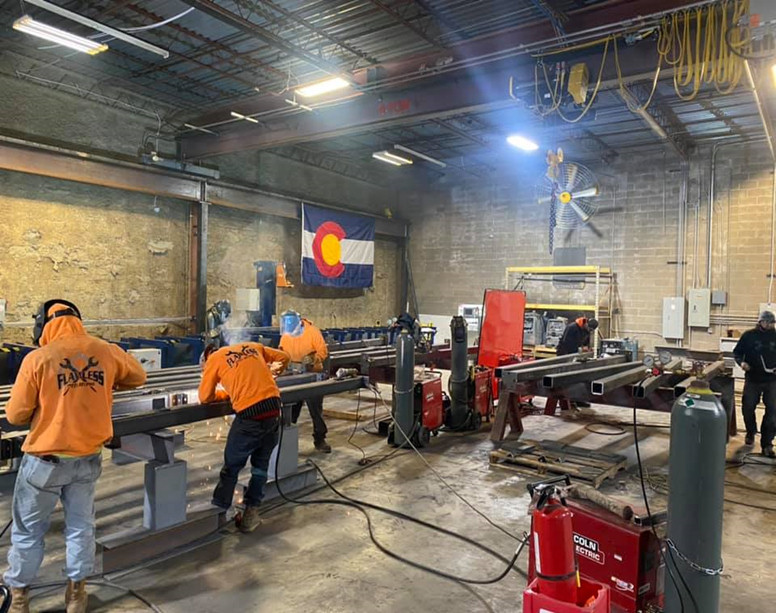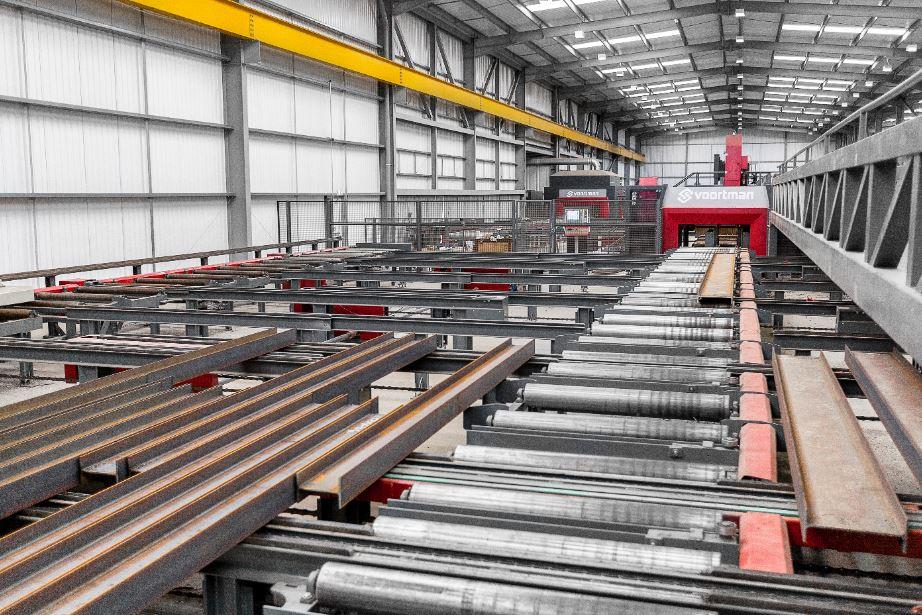Alpha Reo: Blazing A Trail in Reinforced Steel Solutions
Alpha Reo: Blazing A Trail in Reinforced Steel Solutions
Blog Article
Innovative Trends in Steel Construction: Enhancing Longevity and Precision
In the world of steel construction, the search of sturdiness and precision has actually brought about a wave of cutting-edge fads that are improving the sector. From improvements in welding innovations to the assimilation of robotic automation in manufacture procedures, the landscape of steel manufacturing is evolving swiftly. High-strength alloy growth, combined with the utilization of 3D modeling and simulation software, is pushing the borders of what is attainable in terms of architectural integrity and accuracy. Additionally, the growing emphasis on sustainable techniques in steel production is not just driving performance but also cultivating an extra environmentally mindful strategy to construction. These trends are not simply shaping today however likewise preparing for the future of steel construction, guaranteeing further enhancements in sturdiness and accuracy.
Advanced Welding Technologies
In the world of steel fabrication, the fostering of cutting-edge welding modern technologies has actually substantially reinvented the industry's strategy to attaining superior top quality and precision in structural welds. Advanced welding modern technologies, such as laser beam of light welding and friction mix welding, have arised as game-changers in the area. By leveraging these advanced welding techniques, steel producers can elevate the resilience, strength, and accuracy of their architectural welds, fulfilling the increasingly requiring needs of modern-day building jobs.
Robotic Automation in Fabrication
Embracing robot automation has actually ended up being a cornerstone of contemporary steel manufacture techniques, boosting and streamlining procedures performance across the industry. Robotics are changing the way steel components are produced, offering unrivaled accuracy and speed while reducing human error. These automated systems can handle recurring jobs with regular precision, bring about better final product.
One secret benefit of robotic automation in steel fabrication is the ability to function all the time without exhaustion, substantially boosting manufacturing result. This constant procedure reduces downtime and speeds up task timelines, eventually conserving expenses for producers. Additionally, robots can be programmed to perform elaborate tasks that might be tough or harmful for human employees, improving safety and security in the workplace.
Furthermore, robot automation makes it possible for seamless integration with other electronic modern technologies, such as computer-aided style (CAD) software application and Web of Things (IoT) systems (metal fabrication melbourne). This interconnected approach boosts interaction in between various stages of construction, enhancing process and guaranteeing real-time tracking and control. As the steel construction market continues to progress, robotic automation stands out as a transformative force driving performance and precision in making processes

High-Strength Alloy Development
The advancement of high-strength alloy advancement in steel fabrication is improving the industry's strategy to enhancing material sturdiness and efficiency. High-strength alloys are crafted to exhibit premium mechanical buildings, such as increased tensile toughness, strength, and rust resistance compared to conventional steel qualities. By including these innovative alloys into construction processes, suppliers can produce elements that endure greater anxiety degrees and harsh atmospheres, resulting in even more reputable and resilient final result.
One key advantage of high-strength alloy development is the ability to minimize product thickness without jeopardizing architectural stability. This not only results in lighter-weight components however likewise adds to set you back financial savings and enhanced performance in construction and assembly procedures. The boosted strength-to-weight proportion of these alloys permits for the style and building article source and construction of structures with higher load-bearing capacities while lessening overall weight.
3D Modeling and Simulation Software Program
Improvements in steel manufacture procedures have been substantially driven by the assimilation of innovative 3D modeling and simulation software tools. These devices allow producers to produce thorough virtual models of their projects, allowing them to visualize the last item with accuracy before any type of physical work starts. By imitating numerous stress variables, ecological problems, and architectural loads, producers can optimize styles for enhanced resilience and efficiency. Additionally, 3D modeling and simulation software improve the production process by recognizing possible issues early on, reducing the demand for expensive rework and reducing material waste.

Lasting Practices in Steel Production
Incorporating lasting methods right into steel manufacturing processes is important for minimizing ecological effect and making certain long-term resource availability. One essential sustainable technique is the adoption of energy-efficient modern technologies to lower greenhouse gas emissions throughout the steel production process. This consists of using renewable power resources, such as solar or wind power, to power steel plants and applying energy-efficient devices to optimize power usage.
Another important aspect of sustainable steel manufacturing is the responsible sourcing of resources. This entails guaranteeing that the iron ore and various other sources utilized in steelmaking are obtained from eco friendly and honest resources. By advertising transparency in the supply chain and adhering to strict environmental criteria, steel manufacturers can decrease the unfavorable influences of resource removal on neighborhood ecological communities and areas.

Final Thought
To conclude, the cutting-edge trends in steel fabrication such as innovative welding technologies, robotic automation, high-strength alloy growth, 3D read here modeling and simulation software program, and sustainable techniques are boosting the sturdiness and accuracy of steel products. These advancements are revolutionizing the steel manufacture industry by improving sustainability, performance, and high quality. It is clear that the future of steel construction depends on embracing these advanced technologies to meet the demands of modern-day construction and production sectors.
In the realm of steel manufacture, the pursuit of toughness and precision has actually led to a wave of innovative fads that are improving the industry.In the realm of steel fabrication, the fostering of advanced welding technologies has significantly revolutionized the sector's strategy to attaining exceptional high quality and precision in structural welds. As the steel manufacture industry proceeds to progress, robotic automation stands out as a transformative force driving efficiency and accuracy in manufacturing processes.
Furthermore, reusing and reusing steel scrap and waste products play a considerable role in enhancing the sustainability of steel manufacturing. steel fixing.In conclusion, the ingenious patterns in steel construction such as innovative welding modern technologies, robotic automation, high-strength alloy growth, 3D modeling and simulation software application, and sustainable practices are improving the longevity and accuracy of steel products
Report this page